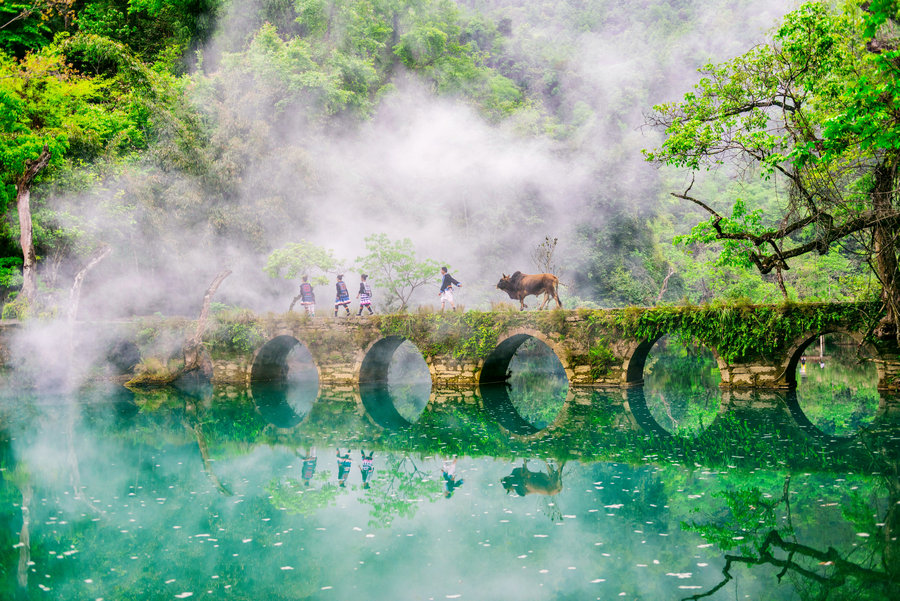

Studying ecosystem
In January, a group of 20 teachers and students from Guizhou University arrived in Libo to choose a sample location to conduct a biodiversity investigation into the karst forest ecosystem, together with five staff members from the reserve.
Yan Lingbin, a teacher from the College of Life Sciences in Guizhou University, says they have followed the international academic standards to choose a square sample location of 25 hectares, including a part of the Libo forest that can best represent its ecosystem.
The diverse creatures that live there have been less disturbed by human activities, so the forest is preserved as a typical, primordial ecosystem of evergreen and deciduous broad-leaved trees.
The sample location includes the domain of a black king cobra, Yan says, that people often see. "That's one of the reasons we went there to choose the sample location in winter. It was not so hot and we wouldn't meet so many insects and snakes," he says.
Indomitable as it is, life is nonetheless fragile, especially in the ecosystem of the karst forest.
Usually in southern China, with rainwater and heat, soil is thick and fertile. However, in a karst landscape, the rocks are shaped by water. There are many small openings and cracks on their surface and over the years, due to the erosion of rainwater, caves form, so when it rains, the soil seeps through, Yan says.
"Little soil can be maintained in this ecosystem, and it is rare to have forests growing in such an environment. That's why it's fragile and unique," he says.
In karst landscapes, soil and water are easily lost. Moreover, the rocks contain a comparatively higher quantity of magnesium and calcium, so unlike many living environments that are usually acidic, the karst forest is alkaline, and creatures need to adapt to it, which also makes it unique, he says.
A karst forest takes much longer to recover, he says. He cites a statistic that proves the point. It takes about 8,000 years to form soil of 1 centimeter in a karst space, in comparison to dozens of years in other more fertile areas.
Although water leaks through the cracks on the rocks, in subtropical weather, with enough water, animals such as frogs can still flourish, providing enough food for snakes and other predators.
In the university investigation that will span years, researchers will install infrared cameras, sound recorders and digital cameras for phenological monitoring to catch the sounds of birds and frogs, as well as to record the growing process of plants. They will also count the number of species and their population.
This investigation is based on the results of decades of hard work to preserve the karst forest.